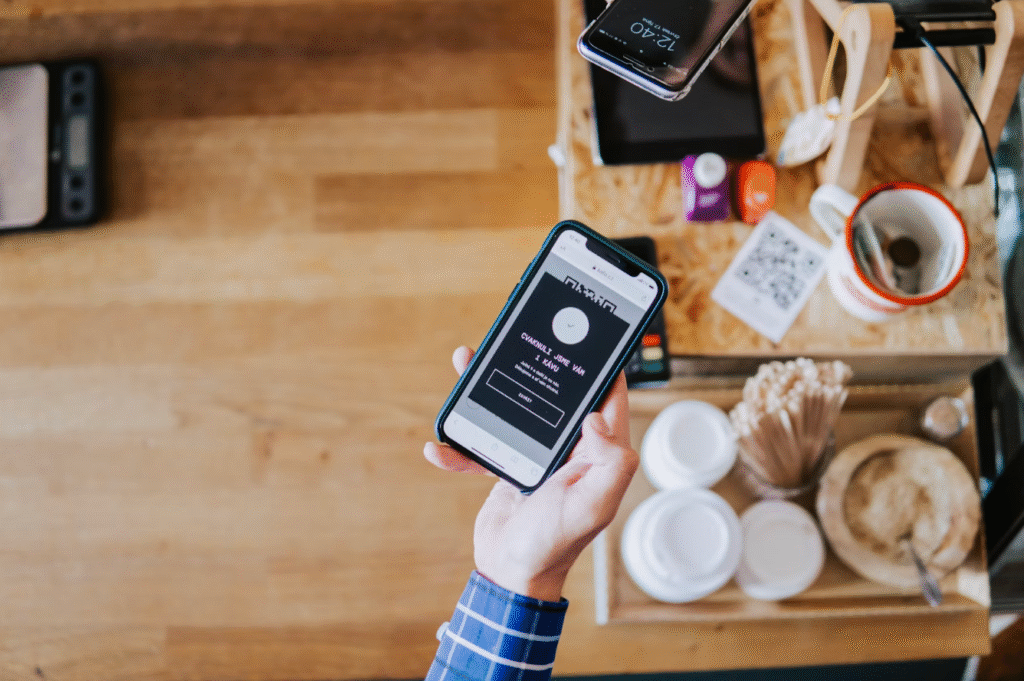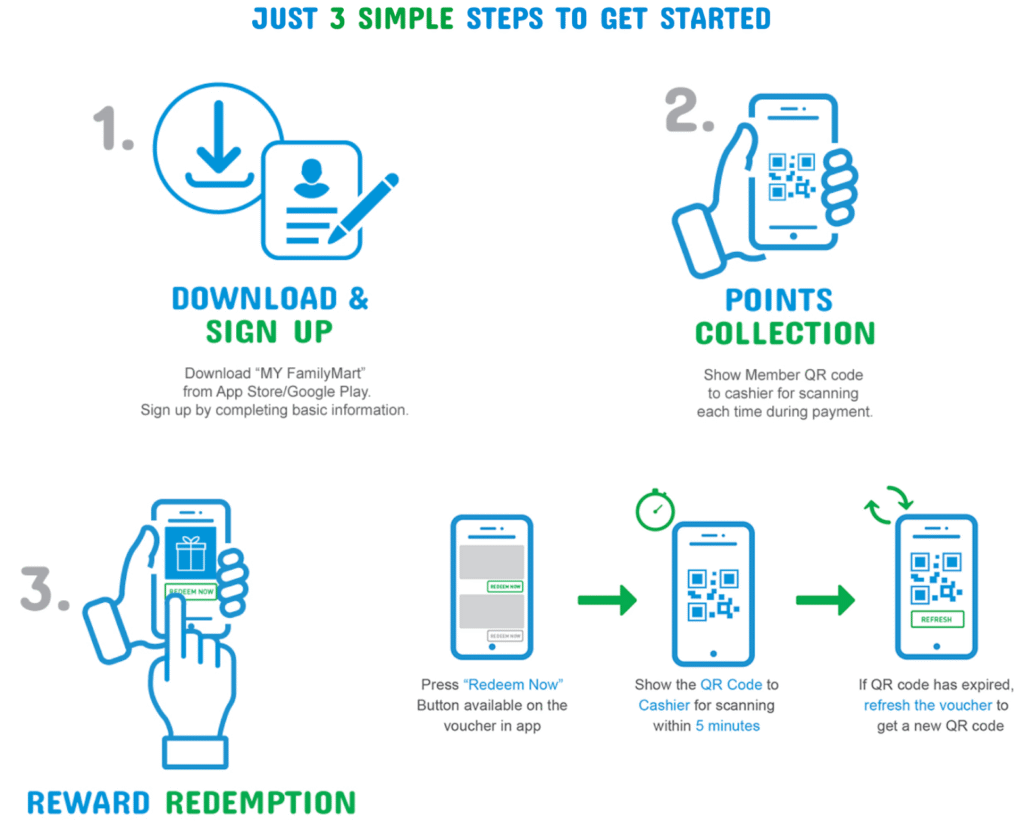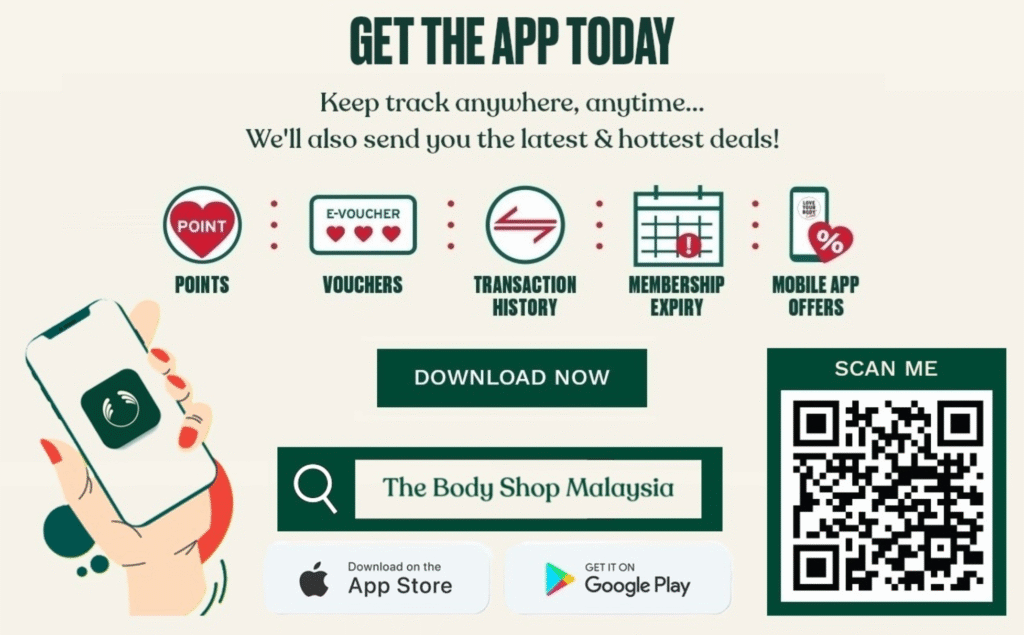Estimated Reading Time: 10 minutes

Loyalty programs have officially gone digital… but customers are so over it.
They’re tired of flashing QR codes to earn points, scanning yet another QR code loyalty card, or getting hit with the fifth “download our loyalty card app” pop-up. With loyalty fatigue rising, shoppers don’t want to juggle receipts, QR-code based sign-ins, or a customer loyalty app that takes up storage. They just want a digital loyalty experience that’s simple and rewarding.
Today, every business is asking the same question:
“Should I use a QR code loyalty program or invest in a full loyalty program app?”
A QR-based loyalty system is fast and effortless to roll out. A loyalty system app, on the other hand, offers richer personalization, automated communication, and deeper data (the kind that can truly boost retention).
In this guide, we’ll compare QR codes vs loyalty apps, break down the pros and cons of QR code point systems and customer loyalty apps, and help you decide which digital loyalty format wins in 2025.
The Rise of Contactless Loyalty
The pandemic made “contactless” go from convenience to necessity, and businesses scrambled to keep up. Suddenly, everyone had a QR code: menus, feedback forms, payment portals, even loyalty sign-ups.
It worked… sort of.
But as customer expectations matured, so did loyalty technology. What began as a quick fix evolved into a more sophisticated ecosystem powered by personalization, real-time data, and mobile-first experiences.
Today, both QR codes and loyalty apps dominate digital loyalty, but only one truly retains customers in 2025.
Why QR Codes and Apps Dominate 2025
In 2025, QR codes and loyalty apps reign supreme because they solve the same problem: convenience. But they do it in very different ways.
QR codes are the minimalist’s dream — scan, earn, go. No downloads, no passwords, no clutter. That’s why small businesses prefer it.
Apps, however, are where real evolution happens. They’re not just digital loyalty cards; they’re ecosystems. With apps, brands are able to personalize offers, send push notifications, and track user behavior in real time. This way, customers actually use the program instead of forgetting it exists.
Interestingly, both formats dominate 2025 for different reasons:
- QR codes win in accessibility
- Apps win in retention, personalization, and data-driven growth
But, the tide’s turning fast. Studies show that more than 70% of loyalty program members prefer to engage with loyalty programs via mobile app.
In short, QR codes started the digital loyalty revolution, but apps are the ones scaling it further.
Key Consumer Preferences You Should Know
Here’s what 2025 consumers want:
- Convenience: Instant sign-ups, instant rewards. No downloading required (unless the value is clear).
Example:
Starbucks Rewards lets members order ahead and skip the queue, earning stars automatically with every payment.

- Personalization: Offers that feel “just for me”.
Example:
Starbucks Rewards takes it further with “Just for You” offers — individualized deals based on what each customer actually orders.

- Gamification: Levels, badges, progress bars.
Example:
McDonald’s Monopoly is a great example of gamification. Customers collect stickers for prizes, meals, or points, turning purchases into excitement.

- Omnichannel Consistency: Points earned online should reflect in-store (and vice versa).
Example:
COS have mastered this by syncing rewards, purchase history, and membership benefits across channels. Whether a customer shops in the app or at a physical boutique, their profile and perks stay perfectly aligned.
And that’s where QR codes start to show cracks. Simplicity alone can’t keep customers coming back.
QR Code Loyalty
QR-based loyalty programs had their golden era during the pandemic. Everyone wanted a low-cost, low-contact way to reward customers. And it worked wonders for small cafes, food stalls, and pop-ups.
But in 2025, that shine’s wearing off.
Low Cost, High Accessibility
QR code loyalty programs are incredibly easy to deploy. Print, paste, scan. Done. Customers can then sign up or collect points on the spot without downloading anything.
That’s why small businesses still love them. Tealive, for instance, initially offered QR-based loyalty stamps for quick in-store rewards. FamilyMart and pop-up cafes in major cities also use QR systems to collect customer data with minimal setup.

It’s affordable and functional… but only up to a point.
But what will happen when your brand grows? When you open multiple outlets, launch online ordering, or want to send out targeted offers? Suddenly, that “simple” QR system starts to feel like duct tape holding your marketing together.
Ideal for Cafes, Retail, and Pop-Ups
If your business thrives on quick repeat visits, QR systems are a good start.
But scaling is where it gets messy.
Imagine hundreds of scanned codes across different stores, inconsistent point tracking, and no integration with online sales.
Bottom line: QR works beautifully for low-volume operations, but cracks under enterprise-level pressure.
App-Based Loyalty
App-based loyalty is where the real magic happens. Where most forward-thinking brands are placing their bets.
Unlike QR systems, apps do more than store points. They build relationships through data, push notifications, and gamified experiences that keep customers coming back for more.
Personalization, Push Notifications, and Analytics
Think of app loyalty as your marketing command center.
Every tap, purchase, and preference feeds your database, which means smarter campaigns, better timing, and offers that feel personal.
For example:
- Panera Bread’s MyPanera app uses AI-driven suggestions based on purchase history, leading to an increase in repeat visits.
- The Body Shop’s app integrates loyalty with activism, where points can be used for charitable causes — aligning with its brand story while boosting engagement.
- Nintendo’s MyNintendo app gamifies loyalty entirely.
This kind of depth simply isn’t possible with QR codes.
Plus, apps give businesses a direct communication channel (push notifications for flash sales, reminders, or new product launches) without relying on social algorithms or third-party platforms.
When Apps Become Loyalty Ecosystems
The best loyalty apps aren’t just digital cards. They unify shopping, rewards, payments, referrals, and exclusive experiences under one roof.
Starbucks didn’t just make a loyalty app — they built a habit machine. Their mobile orders, digital wallets, and gamified star system keep users returning daily. Similarly, Watsons Malaysia’s app syncs e-stamps, store points, and partner rewards across 5,000+ merchant locations, creating one of Southeast Asia’s most expansive loyalty ecosystems.
Apps thrive because they go beyond “collecting points”. They create emotional loyalty. That subtle satisfaction customers feel when they’re recognized, rewarded, and reminded they matter.
How Brands Chose Their Format
So how does this play out in real life? Let’s look at a few brands that experimented with different formats — and what they learned.
Pret A Manger
Pret A Manger launched a simple QR-based rewards system during the pandemic.
Scan. Collect. Redeem.

But as their customer base grew post-pandemic, the model collapsed under scalability issues. Customers complained about duplicate scans, delayed redemptions, and lost data across branches.
Pret has since been testing app-based loyalty to integrate payments and rewards seamlessly, proving that QR loyalty struggles once volume increases.

The Body Shop
Initially, The Body Shop tried QR code loyalty to drive sign-ups at physical stores. But customers found it tedious to re-scan for every purchase.

The brand then shifted to an app model that merges online and offline engagement.
Now customers can redeem rewards, track offers, and access personalized tips in one place. That shift didn’t just fix friction — it boosted retention.
The Right Choice for Your Business
Choosing between QR and app loyalty goes far beyond just tech. It’s about understanding your brand’s stage, scale, and customer behavior.
Cost, Scalability, and Customer Effort
Here’s a quick rule of thumb:
- QR: Simple, low-cost, temporary solution
- App: Long-term, data-rich, scalable strategy
QR systems work great when you’re just starting out or running low-touch operations. But if your business is expanding, your customers are digital natives, or you want detailed analytics; an app is the smarter play.
Customer effort matters — if a loyalty program structure is too complex, it can lead to loyalty fatigue. Apps reduce effort through automation so customers don’t need to remember codes, links, or cards.
Easy peasy. Everything happens in one tap.
Why Many Brands Opt for App-Based Loyalty
Apps are more than just data; they’re about depth.
They open the door to tiered rewards, gamification, and omnichannel integration that QR codes simply can’t handle. And with modern platforms like SimpleLoyalty, you don’t need to spend a fortune building one.
SimpleLoyalty lets you design branded loyalty apps that combine ease, analytics, and scalability — all while giving customers that “instant gratification” experience they crave.
In short:
QR codes might win for simplicity.
But apps win for longevity.
Conclusion
QR codes walked so loyalty apps could run.
They’ll always have a place in quick-service setups and pop-up experiences, but for serious customer retention, apps are the clear winner in 2025.
They’re smarter, faster, and more personal. The kind of loyalty that doesn’t just reward, but remembers. So, if your QR system’s starting to feel like digital duct tape, it might be time to evolve. After all, loyalty isn’t about scanning a code; it’s about building a connection.
And that’s where SimpleLoyalty comes in: transforming everyday transactions into lasting relationships.

